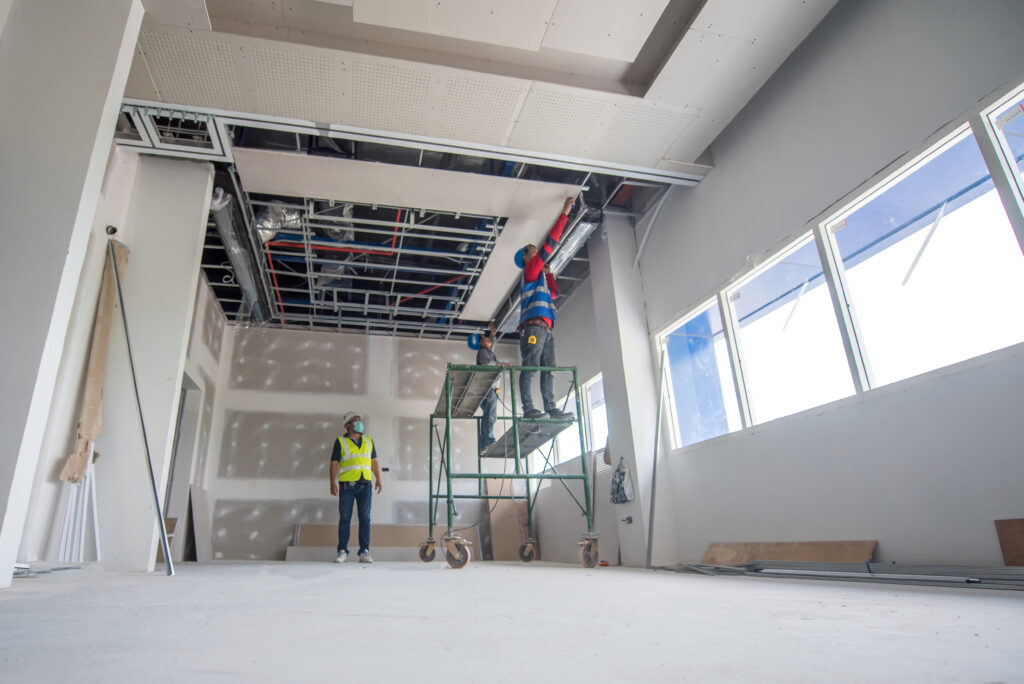There are many elements to planning the construction of a commercial building. One crucial component is the choosing of the type of shell construction. The two most common types are gray shell and vanilla shell. The differences outlined in this article will help you decide which type best suits your overall project needs.
Gray Shell Construction
Gray shell construction is a term used to describe a commercial construction project that has a fully completed exterior, but the interior is left unfinished. The inside needs to be completed, with electrical, plumbing, HVAC, ceilings, amenities, etc. Gray shell construction is ideal for businesses that require a lot of customization. Tech companies or medical offices may benefit from gray shell construction. Gray shell construction can also accommodate other commercial properties such as warehouses, manufacturing facilities, and distribution centers.
The lack of finishes with gray shell construction allows tenants to design the interior to meet their needs. As a result, the costs associated with gray shell construction are typically lower than vanilla shell construction because of such factors as fewer materials needed and lower labor costs. While there are many benefits to gray shell construction, one downside is the tenant is responsible for all the interior finishes and installation of HVAC, electrical, and plumbing systems, and finishes which can be costly.
Vanilla Shell Construction

Vanilla shell construction, also known as white box construction, refers to a fully completed building on the exterior and interior. The interior finishes and amenities are basic, including flooring, walls, ceiling, electrical, plumbing, and HVAC. This type of construction allows a tenant to move in and start business operations much sooner than gray shell.
Vanilla shell construction is commonly used for office buildings, retail stores, and restaurants. Compared to gray shell, vanilla shell construction is much more turnkey because amenities are in place and allow tenant customization, saving them time and money. On the downside, there may be higher material and labor costs since construction is necessary to complete the interior.
Drawbacks of Shell Condition
While customization is a major benefit of shell construction, it can also have many drawbacks. Because gray shell construction offers the bare bones, finding the right tenant is often difficult. The longer it takes to find a tenant, the more it costs to keep the building secure and maintained, property taxes, and other added expenses paid for by the landlord. Once tenants move in, they are often responsible for interior maintenance costs, which can be time-consuming and expensive.
Vanilla shell construction is more attractive, resulting in an easier sell to tenants. However, the landlord is responsible for higher maintenance costs upfront. Tenants are allowed a budget for small improvements if they don’t deter future tenants. Such allowances include adding additional HVAC and plumbing, building out walls, and adding higher-end finishes.
The choice to use gray shell or vanilla shell construction depends on the project’s specific needs. Both options have their advantages and disadvantages. Ultimately, the choice comes down to factors such as time, budget, and the level of customization. By understanding the differences between gray and vanilla shell construction, project owners can make informed decisions that meet their needs. If you have questions about shell construction or when to start a project, the Division 9 Commercial Construction team is here for you.
